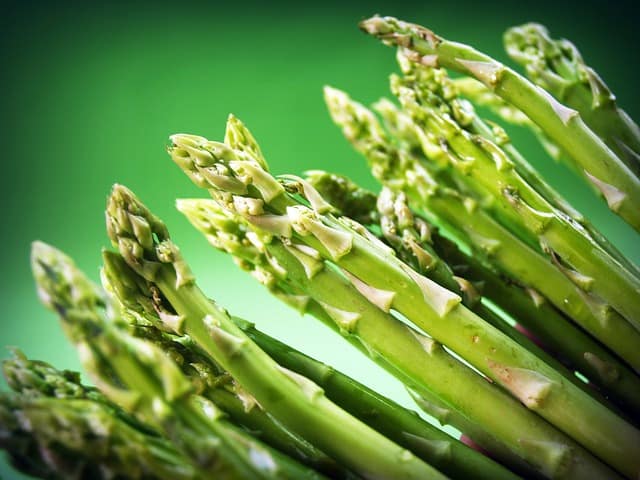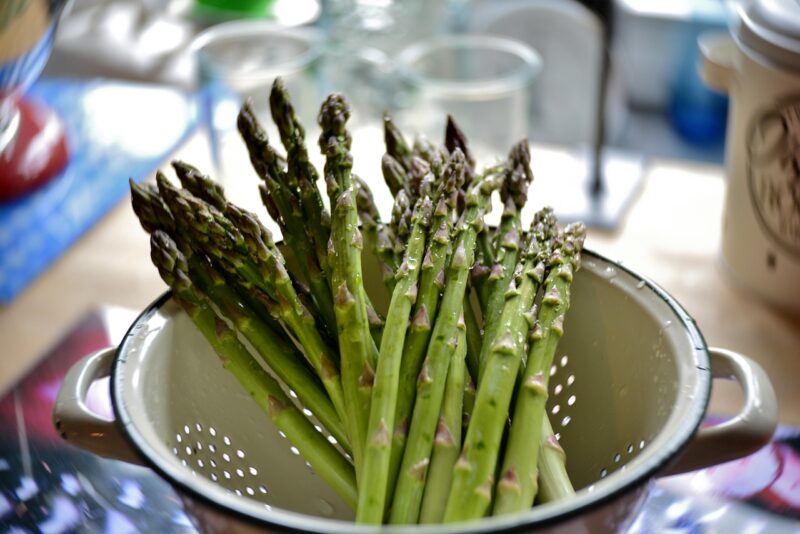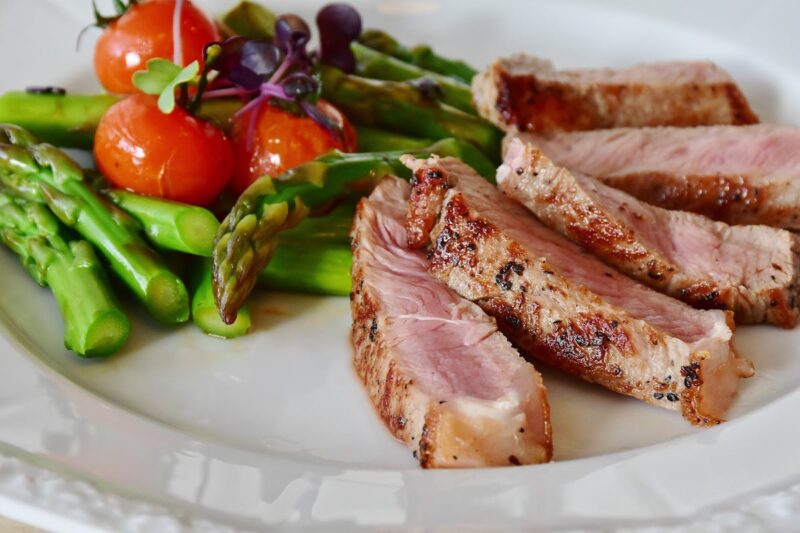Asparagus is a beloved spring vegetable that graces many dinner tables with its vibrant green stalks and unique flavor. Whether roasted, steamed, or sautéed, asparagus can elevate any meal. However, there’s often a lingering question when it comes to this delicate vegetable: can you freeze asparagus?
The answer is yes! But there’s a lot more to consider when you’re thinking about freezing this nutritious veggie. In this extensive guide, we’ll explore the ins and outs of freezing asparagus, from the science behind it to preparation tips, storage methods, culinary uses, nutritional value, and even personal stories that celebrate the bountiful harvest of asparagus.
Why Freeze Asparagus?

Freezing asparagus allows for a longer shelf life. It offers a way to enjoy this seasonal delight all year around. If you find yourself with an excess of asparagus during peak season or have leftovers you don’t want to waste, freezing can be a great option. Plus, frozen asparagus can be a convenient addition to meals, making it easier to incorporate healthy ingredients into your everyday cooking.
But there’s more to it than convenience. Here are some compelling reasons to consider freezing asparagus:
Nutritional Retention: When blanched and frozen correctly, asparagus maintains its vitamins and minerals. You can enjoy the health benefits of this nutrient-dense vegetable long after its growing season has ended.
Cost Efficiency: Purchasing asparagus in bulk when it’s in season can save you money. Freezing it allows you to take advantage of lower prices during peak harvests without letting any go to waste.
Reduced Waste: Freezing leftovers or excess asparagus means you can enjoy them later rather than having to discard them, contributing to a more sustainable kitchen.
How to Freeze Asparagus
Freezing asparagus is straightforward, but it requires a few key steps to ensure that the flavor, texture, and nutrients are preserved. Here’s a step-by-step guide to help you through the process:
1. Selecting Fresh Asparagus
The first step in freezing asparagus is choosing the right stalks. Look for:
Color: Fresh asparagus should be bright green with closed tips and firm stalks. Avoid yellowing or limp asparagus.
Size: Thin to medium stalks tend to freeze better than very thick ones because they retain their texture more effectively.
2. Preparing the Asparagus
Before freezing, the asparagus needs a little prep work:
Wash: Rinse the asparagus under cool water to remove dirt and debris.
Trim: Cut the woody ends off the stalks, typically about 1 to 2 inches from the bottom, depending on the stiffness of the stalk.
3. Blanching
Blanching is crucial for preserving the flavor, color, and texture of asparagus during freezing. Here’s how to do it:
Boil Water: Fill a large pot with water and bring it to a rolling boil.
Prepare Ice Bath: While waiting for the water to boil, set up a bowl of ice water.
Blanching Process: Add the asparagus to the boiling water and let it cook for about 2-4 minutes, depending on the thickness of the stalks. Thin stalks may only need 2 minutes, whereas thicker ones might require closer to 4 minutes.
Shock: Once the time is up, quickly transfer the asparagus to the ice bath using a slotted spoon. This stops the cooking process and preserves that beautiful green color.
4. Draining and Drying
After cooling the asparagus in the ice bath for a few minutes:
Drain: Remove the asparagus from the ice water and let it drain in a colander.
Dry: Pat the asparagus dry with a clean kitchen towel. This step is essential to prevent ice crystals from forming during freezing, which can lead to freezer burn.
5. Packing for Freezing
Once the asparagus is dry, it’s time to pack them for storage:
Freezer Bags: Place the blanched and dried asparagus in freezer-safe bags. Remove as much air as possible to avoid freezer burn. A vacuum sealer can be particularly effective here.
Labeling: Don’t forget to label your bags with the date, so you know how long they’ve been in the freezer.
Flat Storage: Laying the bags flat when freezing allows for more efficient storage and quicker thawing.
6. Freezing
After packing, place the asparagus in the freezer. They can typically be kept frozen for 8-12 months without significant loss of quality.
Culinary Uses for Frozen Asparagus
Frozen asparagus is incredibly versatile, making it a wonderful ingredient to have on hand. Here are some inspiring ways to incorporate it into your meals:
1. Stir-Fries
Frozen asparagus can easily be added to stir-fries. Simply toss it in with your other vegetables, allowing it to cook for a few extra minutes since it’s already blanched. Pair it with proteins like chicken, shrimp, or tofu for a colorful, healthy dish.
2. Soups and Stews
Adding frozen asparagus to soups and stews can introduce a delightful flavor and texture. It can serve as a nutritious addition, bringing a hint of earthiness that complements the other ingredients.
3. Casseroles
Frozen asparagus is also a great addition to casseroles. Whether mixed into a creamy chicken casserole or layered in a vegetable bake, it holds up well even after being frozen.
4. Pasta Dishes
You can toss frozen asparagus directly into pasta dishes. It can be added just a few minutes before you finish cooking the pasta, infusing the dish with fresh flavors. Consider making a lemon-garlic pasta with frozen asparagus, parmesan, and a touch of olive oil.
5. Breakfast Bowls
For a nutritious breakfast, incorporate frozen asparagus into your egg dishes, such as omelets or quiches. It can elevate the meal while introducing additional nutrients.
Nutritional Profile of Asparagus

Understanding the health benefits of asparagus makes it even more appealing. This vegetable is a powerhouse of nutrients. Here’s a closer look at its nutritional content:
Vitamins: Asparagus is rich in vitamins A, C, E, K, and several B vitamins, including folate. These vitamins are vital for maintaining healthy skin, supporting immune function, and promoting cell health.
Minerals: It also contains essential minerals such as iron, calcium, and potassium, which play significant roles in bodily function, including muscle contraction and maintaining healthy bone density.
Fiber: Asparagus is a great source of dietary fiber, crucial for digestive health. Consuming fiber-rich foods can help regulate digestion, promote a healthy gut, and aid in maintaining a balanced weight.
Antioxidants: This vegetable boasts numerous antioxidants, including flavonoids and phenolic acid, which help combat oxidative stress in the body, potentially reducing the risk of chronic diseases.
Common Myths About Freezing Asparagus
When it comes to freezing asparagus, several myths often circulate. Let’s set the record straight on some common misconceptions:
Myth 1: Freezing Ruins the Texture
While it’s true that some vegetables lose their texture when frozen improperly, blanching before freezing helps mitigate this issue with asparagus. The blanching process preserves its firmness, making it still enjoyable once thawed.
Myth 2: You Can Freeze Asparagus Raw
Freezing asparagus without blanching isn’t recommended. The green stalks will lose their vibrant color, become mushy, and have a less desirable taste after thawing.
Myth 3: Frozen Asparagus Isn’t Nutritious
The belief that frozen vegetables are less nutritious than their fresh counterparts is misleading. Freezing can preserve the nutrients effectively, especially if done shortly after harvesting.
Storing Frozen Asparagus
Once you’ve got your frozen asparagus ready, proper storage is key to enjoying its flavor and nutrients down the line. Here are some tips to maximize the longevity of your frozen asparagus:
Ideal Temperature: Keep your freezer at 0°F (-18°C) or below to ensure the best quality over time. Avoid opening the freezer frequently, which can raise the temperature and lead to freezer burn.
Avoid Overcrowding: While it’s tempting to fill your freezer, overcrowding can prevent proper air circulation and affect the quality of frozen foods.
Use Within a Year: Although frozen asparagus can last 8-12 months, try to use it within the year for optimal flavor and nutrition.
Personal Anecdote: Embracing Asparagus
Growing up, asparagus was a staple in my family’s springtime meals. My grandmother would often serve it simply steamed, drizzled with a bit of balsamic vinegar. The sight of vibrant green stalks filled with potential always brought me joy, but nothing surpassed the feeling of growing my own in the garden.
I remember the first year I harvested my batch. Overwhelmed by the abundance, I decided to freeze a portion. The very thought of enjoying home-grown asparagus in the dead of winter was exhilarating. That winter, breaking out a bag of frozen asparagus felt like bringing a piece of spring into our kitchen. It turned into a delightful addition to stir-fries and pasta dishes, reminding me of warm sunny days.
Conclusion: An Evergreen Option
Freezing asparagus opens up a world of culinary possibilities, allowing you to enjoy the flavors and nutrients of this stunning vegetable well beyond its harvest. By understanding how to select, prepare, and store asparagus, as well as discovering its many uses in the kitchen, you can truly make the most of this green gem.







